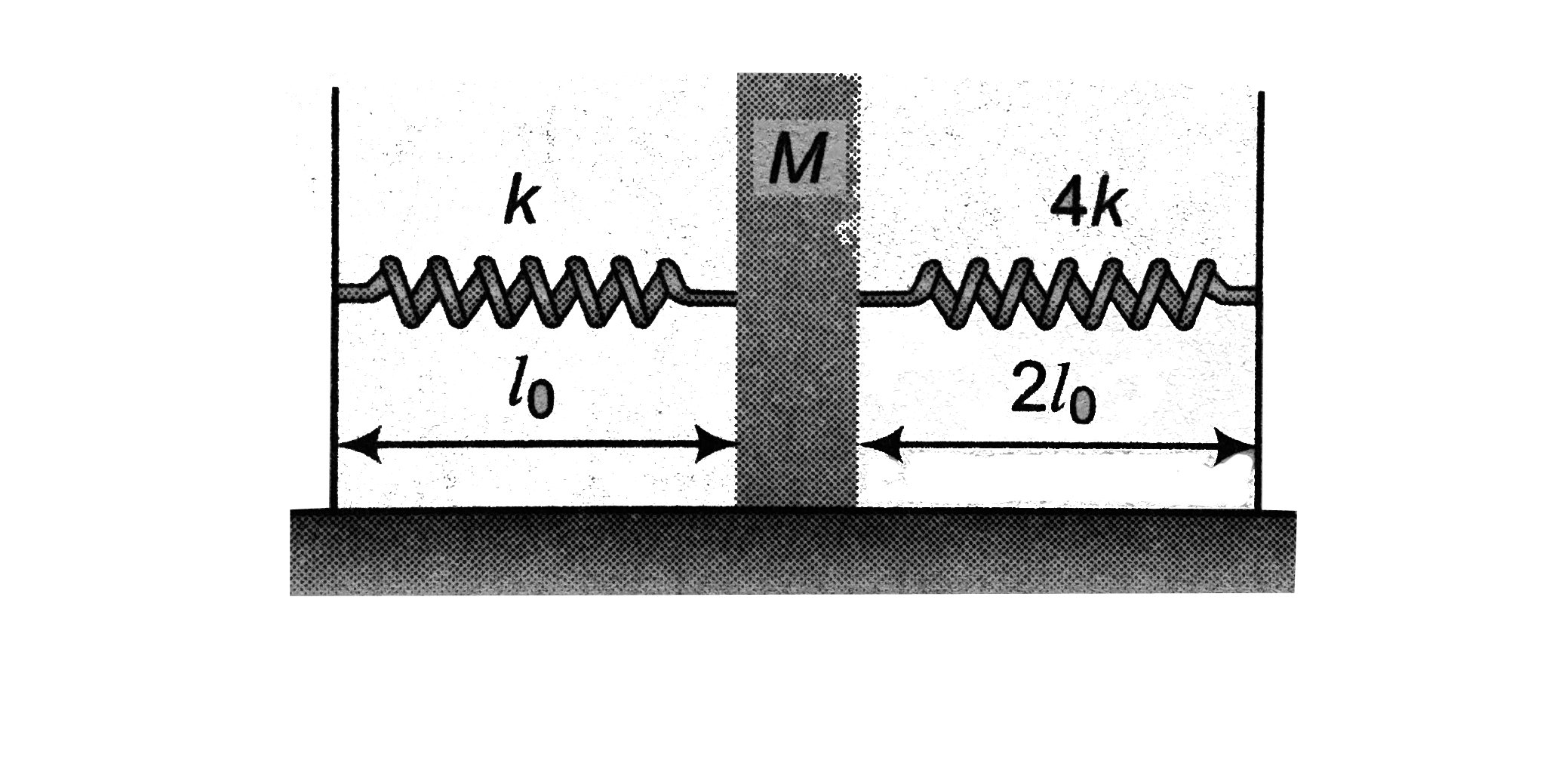Two identical blocks P and Q have mass m each. They are attached to two identical springs initially unstretched. Now the left spring (along with P) is compressed by A/2 and the right spring (along with Q) is compressed by A. Both the blocks are released simultaneously. They collide perfectly inelastically. Initially time period of both the blocks was T.

The time period of oscillation of combined mass is
12kA2
14kA2
18kA2
116kA2
The correct Answer is:D
Step by step video, text & image solution for Two identical blocks P and Q have mass m each. They are attached to two identical springs initially unstretched. Now the left spring (along with P) is compressed by A//2 and the right spring (along with Q) is compressed by A. Both the blocks are released simultaneously. They collide perfectly inelastically. Initially time period of both the blocks was T. The time period of oscillation of combined mass is by Physics experts to help you in doubts & scoring excellent marks in Class 12 exams.
Updated on:21/07/2023Similar Questions
The period of oscillation of a mass M suspended from a spring of spring constant K is T. the time period of oscillation of combined blocks is
View SolutionTwo identical springs of spring constant k are attached to a block of mass m and to fixed supports as shown in the figure. The time period of oscillation is
View SolutionThe time period of oscillations of a block attached to a spring is t_(1) . When the spring is replaced by another spring, the time period of the block is t_(2) . If both the springs are connected in series and the block is made to oscillate using the combination, then the time period of the block is
View SolutionTwo identical blocks P and Q have mass m each. They are attached to two identical springs initially unstretched. Now the left spring (along with P) is compressed by (A/2) and the right spring (along with Q) is compressed by A. Both the blocks are released simultaneously. They collide perfectly inelastically. Initially time period of both the block (assuming each block was individually connected to one spring) was T. The amplitude of combined mass is
View Solution6kg तथा 3kg द्रव्यमान के दो ब्लॉक 2π2N/m स्प्रिंग नियतांक की द्रव्यमानहीन स्प्रिंग के दोनों सिरो से जड़े हुए हैं। यदि स्प्रिंग संपीडीत की जाती है तथा घर्षणरहित क्षैतिज सतह पर छोड़ी जाती है तो प्रत्येक ब्लॉक का आवर्त काल (सैकण्ड में) ज्ञात करो।
View SolutionA block of mass M is kept on a smooth surface and touches the two springs as shown in the figure but not attached to the springs. Initially springs are in their natural length. Now, the block is shifted (l0/2) from the given position in such a way that it compresses a spring and released. The time - period of oscillation of mass will be

View SolutionPassage II) Two identicla blocks P and Q have masses m each. They are attached to two identical springs initially unstretched. Now the left spring (along with P) is compressed by A2 and the right spring (along with Q) is compressed by A. Both the blocks are released simultaneously. They collide perfectly inelastically. Initially time period of both blocks was T.

The time period of oscillation of combined mass is
View SolutionPassage II) Two identicla blocks P and Q have masses m each. They are attached to two identical springs initially unstretched. Now the left spring (along with P) is compressed by A/2 and the right spring (along with Q) is compressed by A. Both the blocks are released simultaneously. They collide perfectly inelastically. Initially time period of both blocks was T. The amplitude of combined mass is
View Solution

